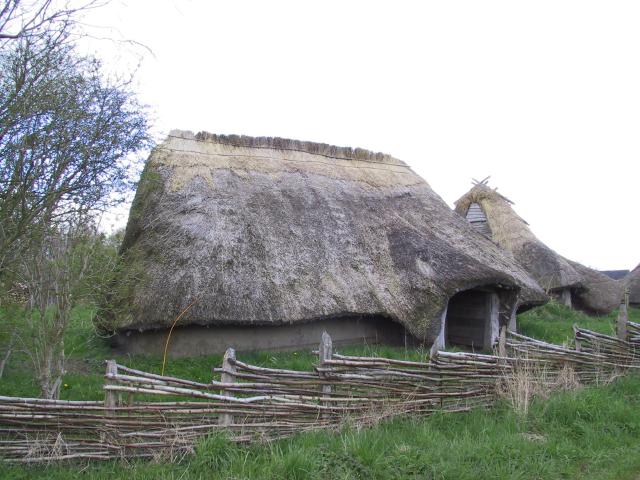Julius Caesar, De bello Gallico
Book 1, chapter 37
Haec eodem tempore Caesari mandata referebantur et legati ab Haeduis et a Treveris veniebant: [2] Haedui questum quod Harudes, qui nuper in Galliam transportati essent, fines eorum popularentur: sese ne obsidibus quidem datis pacem Ariovisti redimere potuisse; [3] Treveri autem, pagos centum Sueborum ad ripas Rheni consedisse, qui Rhemum transire conarentur; his praeesse Nasuam et Cimberium fratres. Quibus rebus Caesar vehementer commotus maturandum sibi existimavit, ne, si nova manus Sueborum cum veteribus copiis Ariovisti sese coniunxisset, minus facile resisti posset. [4] Itaque re frumentaria quam celerrime potuit comparata magnis itineribus ad Ariovistum contendit.
My Rendering
At this time and place ambassadors came from the Aedui and Treviri and delivered thus to Caesar: the Aedui complained about the Harudes, who had recently crossed over into Gaul, pillaging their easten frontier; indeed even with hostages they could not buy back peace from Ariouistos; In contrast the Treviri claimed that Swabians from 100 districts were encamped on the banks of the Rhine, attempting to cross, lead by the brothers Nasuos and Cimbrios. Of this Caesar was greatly shaken, thinking he should act quickly, in fact, if this recent force of Swabians joined with the former army of Ariouistos, he would be less able to resist. Therefore, as soon as supplied with grain, he forced marched to draw close to Ariouistos.
Bohn
At the same time that this message was delivered to Caesar, embassadors came from the Aedui and the Treviri ; from the Aedui to complain that the Harudes, who had lately been brought over into Gaul, were ravaging their territories; that they had not been able to purchase peace from Ariovistus, even by giving hostages: and from the Treviri , [to state] that a hundred cantons of the Suevi had encamped on the banks of the Rhine , and were attempting to cross it; that the brothers, Nasuas and Cimberius, headed them. Being greatly alarmed at these things, Caesar thought that he ought to use all dispatch, lest, if this new band of Suevi should unite with the old troops of Ariovistus, he [Ariovistus] might be less easily withstood. Having therefore, as quickly as he could, provided a supply of corn, he hastened to Ariovistus by forced marches.






 Reply With Quote
Reply With Quote

Bookmarks